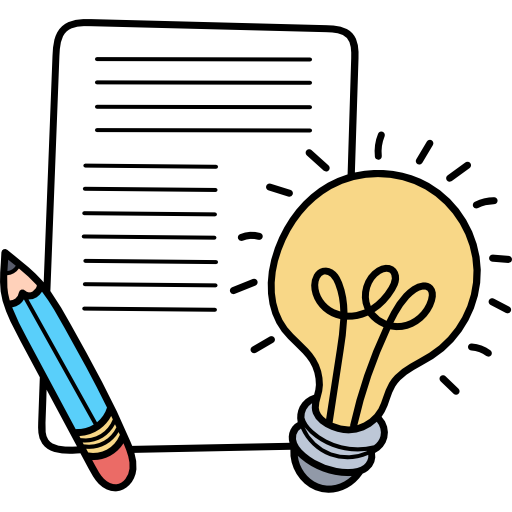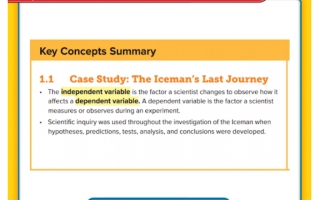تلخيص شامل علوم منهج انجليزي صف سادس : نقدم اليكم في هذا الملف تلخيصا شاملا ، من منهج العلوم الصف السادس ،و قد تم تصميم هذا الملف لمساعدة طلابنا الاعزاء، في دراستهم و تحضيرهم للامتحان النهائي بشكل متكامل
Chapter 2 : Technology and the Design Process
Tools of Technology
Technology is the application of
scientific knowledge to benefit people
A resource is a source of supply or
support. Technological resources include
People - information - tools machines - capital -
time materials - energy • A skill is an ability you develop when
you combine knowledge and practice in order to perform an activity well
Chapter 2 : Technology and the Design Process
Tools of Technology
A tool is a device that increases the
ability to do work. A machine is a device that makes doing work easier. Capital is money, credit, property, or accumulated wealth
Materials used to make products are called engineering materials or production materials. Energy is the ability to cause change
Chapter 2 : Technology and the Design Process
Lesson 2.2 Materials and Their Properties
A physical property is a characteristi that can be observed or measured without changing the identity of the material
A chemical property is the ability or inability of a substance to combine with or change into one or more new substances
Chapter 2 : Technology and the Design Process
Materials and Their Properties • Mechanical properties are characteristics that determine how a material reacts to forces
• Strength
• Elasticity
• Hardness
• Flexibility
Chapter 2 : Technology and the Design Process
2.1 Tools of Technology
Technology is the application of scientific knowledge to benefit people
A resource is a source of supply or
support. Technological resources include People - information - tools machines - capital - time materials - energy
A skill is an ability you develop when you combine knowledge and practice in order to perform an activity well
Chapter 2 : Technology and the Design Process
2.1 Tools of Technology
A tool is a device that increases the ability to do work. A machine is a device that makes doing work easier. Capital is money, credit, property, or accumulated wealth
Materials used to make products are called engineering materials or production materials. Energy is the ability to cause change
Chapter 2 : Technology and the Design Process Lesson
2.2 Materials and Their Properties
Polymers are natural or manufactured materials composed of long chains of small, repeating molecules called monomers. Proteins are an example of a natural polymer
A composite material is a mixture of two or more materials one layered in the other
Chapter 2 : Technology and the Design Process
2.2 Materials and Their Properties An alloy is a mixture of two or more metals. Alloys are used when the properties of a metal need to be improved for an application
Ceramics are made from dried clay or clay-like materials
Chapter 2 : Technology and the Design Process Lesson
2.3 The Design Process
A problem statement is a statement that clearly defines a problem to be solved
Criteria are the standards by which the product will be evaluated
Constraints are limitations put on the design of the product from outside factors such as cost, efficiency, environmental impact, or availability of materials
Chapter 2 : Technology and the Design Process
2.3 The Design Process
Brainstorming is a problem - solving technique that involves individuals contributing ideas without the fear of being criticized • A Pugh Chart is a method used to compare options or solutions
A prototype is a full-scale model that is used to test a new product
Chapter 2 : Technology and the Design Process
2.4 Technology Systems
A system is a group of parts that work together in an organized way
Subsystems are smaller systems that exist within larger systems
When a system has no way to measure or control its product, the system is called an open-loop system
Chapter 2 : Technology and the Design Process
2.4 Technology Systems
Input is the resources, ideas, and activities that determine what needs to be accomplished
A process is the conversion of ideas or activities into products by using machines and labor
Output is what the system produces
Energy, Work, and Simple Machines
Kinetic Energy
Kinetic energy is the energy an object has because it is in motion
Anything that is in motion has kinetic energy, including large objects that you can see as well as small particles, such as molecules, ions, atoms, and electrons
Energy, Work, and Simple Machines
Kinetic Energy cont
Electrons move around the nucleus of an atom, and they can move from one atom to another
When electrons move, they have kinetic energy and create an electric current. The energy that an electric current carries is a form of kinetic energy called electric energy Energy, Work, and Simple Machines
Potential Energy
Potential energy is stored energy that depends on the interaction of objects, particles, or atoms
Gravitational potential energy is a type of potential energy stored in an object due to its height above Earth's surface
Energy, Work, and Simple Machines
Potential Energy cont
Gravitational potential energy depends on the mass of an object and its distance from Earth's surface
The more mass an object has and the greater its distance from Earth, the greater its gravitational potential energy
Energy, Work, and Simple Machines
Potential Energy cont
A drawback of fossil fuels is that they introduce harmful waste products, such as sulfur dioxide and carbon dioxide, into the environment
Scientists are searching for replacement fuels that do not harm the environment Energy, Work, and Simple Machines
Potential Energy cont
Chemical energy also is stored in the foods you eat
Your body converts the energy stored in chemical bonds in food into the kinetic energy of your moving muscles and into the electric energy that sends signals through your nerves to your brain
Energy, Work, and Simple Machines Kinetic and Potential Energies Combined
Objects such as wind turbine blades and particles, such as molecules, ions, atoms, and electrons, often have kinetic and potential energies
Energy, Work, and Simple Machines
Kinetic and Potential Energies
Combined cont
The sum of potential energy and kinetic energy in a system of objects is mechanical energy





